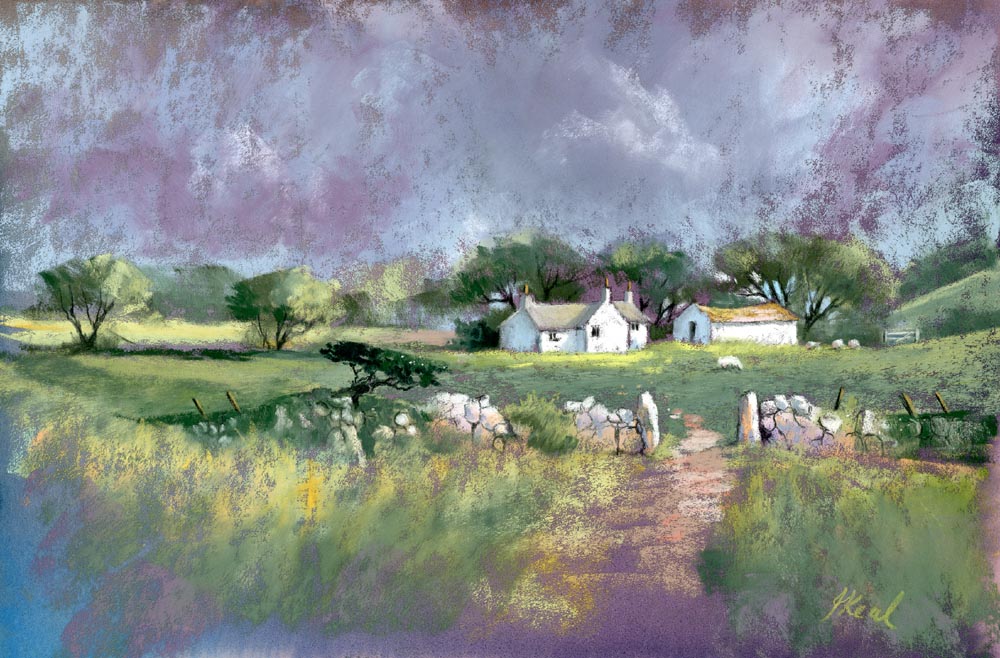Have you ever painted outside when the landscape seems to be moving, jumping about or constantly changing in some way? These can be exciting, opportunistic times for the alfresco artist, but often fraught with problems. Most of the movement, apart from animals, figures or vehicles, is usually down to strong winds, which can make painting or sketching outdoors even more difficult than in light rain.

The scene is a watercolour sketch of Trevone Bay in Cornwall, carried out on a hard-back book of cartridge paper, over a two-page spread. Strong winds were blowing the clouds along at a truly fast rate, so the sky was constantly changing and the cloud shadows over sea and headlands moved astonishingly quickly. Additionally waves crashed in with such force that it threw up great white splashes all the time.
To render the sky I simply wet the whole area and waited for the excess water to run off before applying cobalt blue, working round the clouds and the wet paper automatically resulting in soft edges. In the wind and sun this did not take long to dry, so then I laid in the lighter colours over the headland, including some red on the central promontory. I had already decided this would be my focal point, and I would keep it light with the further headland dark. I could easily have decided to do it the other way round. Whatever you do, don’t try to keep changing these main tonal areas as the scene itself changes, otherwise it will lead to a mess!
Once that had dried I painted in the green top of the closer headland and used cobalt and pthalo blues in the sea, leaving the white surf and splashes as white paper. I could have positioned the main splash a little closer to the central headland to further support the focal point, but when I’m desperate for a cappuccino I sometimes blob these features in where convenient and leave the refinements for the finished painting. Most importantly, don’t feel that because a feature appears in a certain position, that you have to put it exactly there. Finally the dark headland and foreground rocks were painted.
This was done as a sketching demonstration for a course last week. My new book, David Bellamy’s Arctic Light will be published shortly by Search Press, and it’s quite different from any of my previous books – more on that shortly.
Before I go I’d like to highlight a very useful report on watercolour paints that has just been published by www.wonderstreet.co.uk It covers a great many ranges of watercolours, including some I had never heard of, and I recommend you take a look at it on http://wonderstreet.com/blog/w

